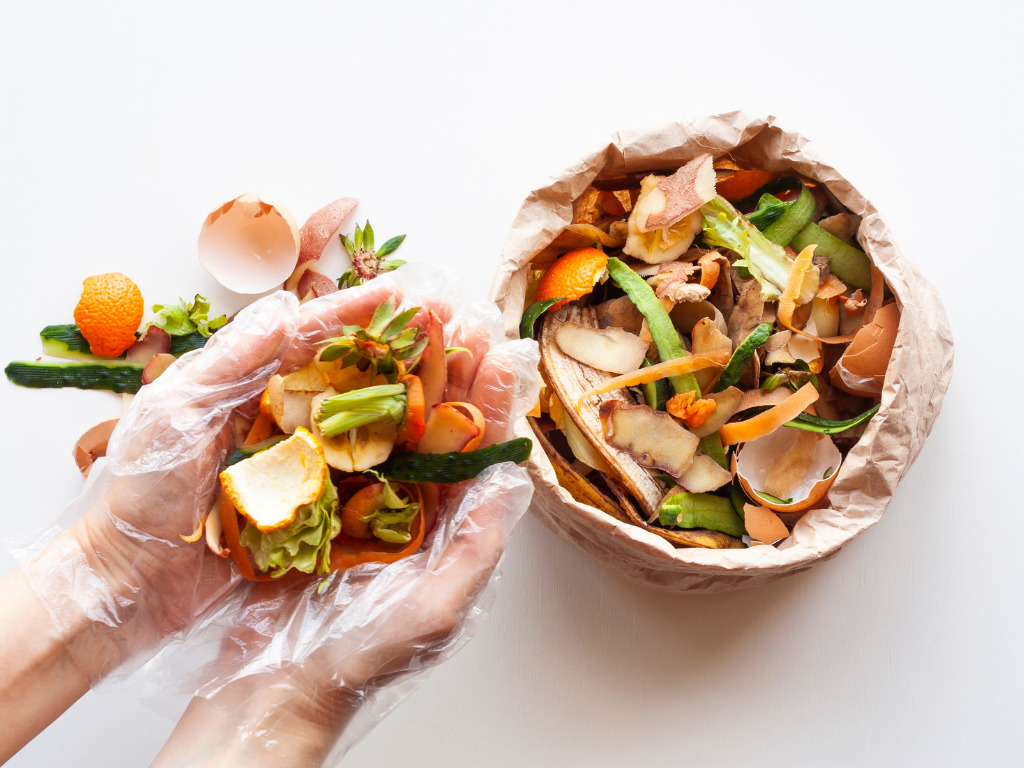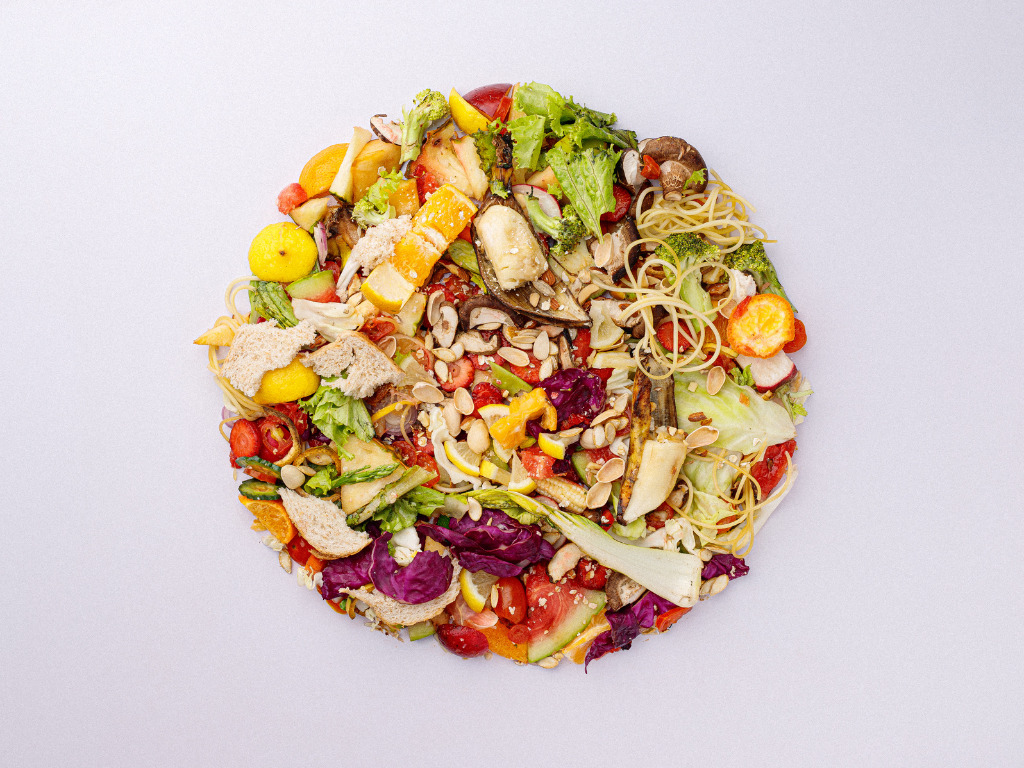Food Waste Needs a Rebrand: From Trash to Treasure, Overcoming The Issue’s Image Problem
8 Mins Read
Food waste is a major global issue with no easy fixes.
By now, we’ve probably all heard the statistic that around one-third of all food produced each year is lost or wasted. That’s the equivalent of each of us putting an entire meal – around 500kcal of food – directly in the trash every single day. This wasted food is responsible for almost 10% of global greenhouse gas emissions and is produced using 25% of the world’s available fresh water.
Less well known, however, is exactly where this waste is created, with a substantial volume actually happening with us – the end-consumer. That is, 61% of total consumption-stage waste is generated in our homes as a direct result of our own behaviour.
The amount of wasted food differs by person and place, but some of the most common items that consumers throw away include fresh, perishable products, such as fruits, vegetables and dairy, as well as dietary staples, like rice and wheat. From an environmental perspective, one of the more concerning wasted foods is meat, given the outsized environmental footprint of producing animal products compared to plant-based meals.
Source: Guo et al., (2020). doi:10.3390/su12187488
And while many food businesses, from producers all the way through to retailers, have made great strides to address food waste in their supply chains, finding effective solutions to prevent and reduce household food waste remains challenging.
This is partly because food waste is such a complicated problem. It’s the result of multiple interconnected decisions made at different time points, from what to buy, what to cook, where and how to store it to how much to cook and how much to serve. This makes it very difficult to isolate a single overarching cause. There is no silver bullet when tackling food waste.
Perhaps even more problematic is the fact that it’s an unpleasant problem to try and fix, too.
Food waste is a yucky problem

When someone says ‘food waste’, chances are that you immediately think about a pile of rotting food – gross, smelly, and ugly. The term evokes a mental image of something inherently disgusting that you probably want to get away from.
Worst still, is the fact that food waste is a relatively invisible problem. Many of us benefit every day from an effective waste infrastructure, wherein we simply toss away unwanted food, put out the bins, and it’s taken away for us. Rarely, if ever, do we see what happens next to our food. Once it’s out of sight, it tends to stay out of mind.
This helps to explain one contradictory finding in the research on household food waste – that most people tend to believe they waste very little food at home, yet levels of waste remain stubbornly high and are set to double by 2050.
Adding to this discrepancy between our perceptions and behaviors is the fact that food waste occurs in the privacy of our homes, with no one to observe what we are doing and can cast a judgmental eye, and where there is no accurate way to measure the amount of food that we individually send to landfill.
Food waste is the opposite of aspirational
Food waste’s inherent lack of both appeal and visibility makes it a challenge to engage consumers on the topic. Unlike other important food system issues, like promoting sustainable diets, there is very little scope to make food waste a sexy conversation starter.
For example, for some, following a plant-based diet can set you apart as a healthy, caring and altruistic individual – all virtuous and aspirational traits. For food waste, however, even one of the more attractive ways to ‘spin’ messaging on the topic – that preventing waste saves you money – has mixed connotations.
On the plus side, highlighting cost savings associated with reducing food waste addresses a major concern for consumers, which is likely to be attention-grabbing and motivating, particularly in these times of high food inflation. On the minus side, however, the idea of cutting costs and waste – by buying less, buying cheaper misshapen foods, or eating leftovers – evokes ideas of frugality and thrift. Neither are necessarily positive traits, as they link to notions of lack of generosity or being a poor provider or a bad host.
The need for a ‘Master Message’

To reduce household food waste, we need greater uptake of the multitude of behaviours that we know make a difference in the home. That is, encouraging consumers to make shopping lists, store food at the correct temperature, freeze excess portions, follow recipes and meal plans, eat leftovers, serve smaller portion sizes and more.
Talking about food waste in a more appealing way can help sidestep some of the more negative implicit associations people hold towards this issue and hopefully motivate the actions we desperately need. Ideally, this would involve developing a single overarching or ‘master’ message, rather than using multiple different ways to talk about all the small actions that can be taken at home to cut waste, which may otherwise confuse and overwhelm people.
An effective ‘master’ message can help organisations that regularly interact with consumers present a common front when they talk about food waste. If restaurants, retailers, manufacturers, supermarkets, charities and policymakers all refer to food waste in the same unified and inspiring way, the core message to cut waste will be reinforced.
What type of messaging inspires behavioural change?
To identify this effective master message, we can take a steer from broader research on pro-environmental messaging in general. Here, one of the most compelling approaches that have so far been found relates to in promoting more sustainable food choices. This is the use of evocative, taste-focused language. This approach can help spark positive mental images related to food that stimulate desire and appetite, thus influencing people to choose plant-based options rather than meat.
Similarly, removing taste-inhibiting language, including scrapping descriptions on menus that use the terms ‘healthy’ or ‘vegetarian’ is recommended. While plant-based options may be both healthy and meat-free, consumers are far more compelled to choose them when they are described using words that emphasize their deliciousness, fillingness or other more appealing characteristics, like enjoying said food during fun meals out with friends.
And it’s not just in the food space where this approach works. Re-naming second-hand clothes in more positive ways – such as ‘pre-loved’, ‘vintage’, ‘original’, or ‘retro’ – has been extensively used as a way to promote the resale of used clothing.
What is needed for food waste, therefore, is a new terminology that bypasses the negative associations with rotting food and replaces these with more positive, desirable ideas instead. Fundamentally, this means changing the term ‘food waste’ itself. Modifying this language would likely not only boost engagement in the issue but also help to correct an inaccurate, commonly-held perception that food waste is half-eaten leftovers, rather than viable but unconsumed food.
Indeed, up to 50% of all food waste generated in the home is still edible. This includes food that never gets used in the first place, or parts of food that could be eaten but that are not commonly used as ingredients in our meals (i.e. stems, leaves, peel, crusts, bones etc).
Rebranding the term ‘food waste’

A variety of nomenclature replacements for ‘food waste’ already exist. For example, terms that highlight the issue of overprovisioning in the home, such as surplus/extra/excess food, or that highlight the food is still safe to consume, like uneaten/unused/spare. Other options incorporate the solution within the name itself, like rescued/saved food and benefit from an association to the idea of helping, doing good, donating and fixing the problem.
Already in common usage across the food industry is the alternative term ‘upcycled’ food, which refers to ingredients, products or meals made from unused food repurposed into new products or meals (though some chefs argue upcycled is not positive enough of a term). Examples include snacks (i.e. banana chips, dried fruit ), flours and other ingredients, drinks (i.e. beer from bread), and condiments (i.e. chutneys, relishes). While this term is more relevant to manufacturers of these new products, upcycling could be suggested to householders as a more attractive and creative way to encourage the consumption of ‘leftovers’. Similarly, ‘repurposed’, ‘legacy’ or ‘regenerated’ meals could also be used interchangeably as a more innovative reframing of a relatively unfashionable behaviour.
Taking something fairly exciting for most – like eating your leftovers – and ‘owning’ the frame is another tactic we see when it comes to messaging around food waste. For example, a range of brands now sell misshapen or imperfect produce proudly and actively call out the fact that their products are ‘ugly’, ‘wonky’ or otherwise ‘odd’ or ‘imperfect’ in some way. Here, the aim is to get ahead of any negative associations the consumer may already have, with the goal of neutralising these (by making it obvious the product is imperfect) rather than seeking to mask them using an appealing alternative.
Next up: extensive consumer testing
All of these framings are likely to prove to be better ways to engage consumers than the current term ‘food waste’, but they all require extensive consumer testing to understand which is the frontrunner as a common master message for stakeholder organizations to rally behind.
Given food waste is such a complicated and fragmented problem that concerns a range of players across the food system, not least consumers themselves, finding a common and inspiring way to reframe the problem into something more hopeful would undoubtedly help us make quicker progress on this important, but unfortunately yucky problem.
The European Food Information Council has created a food-waste quiz in honour of International Day of Food Loss & Waste Awareness. Try it out here.



